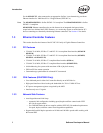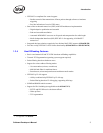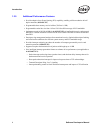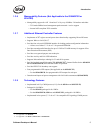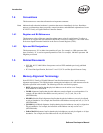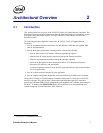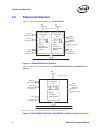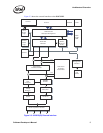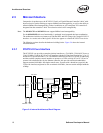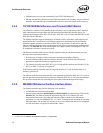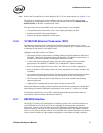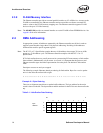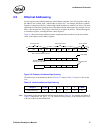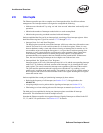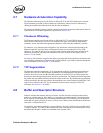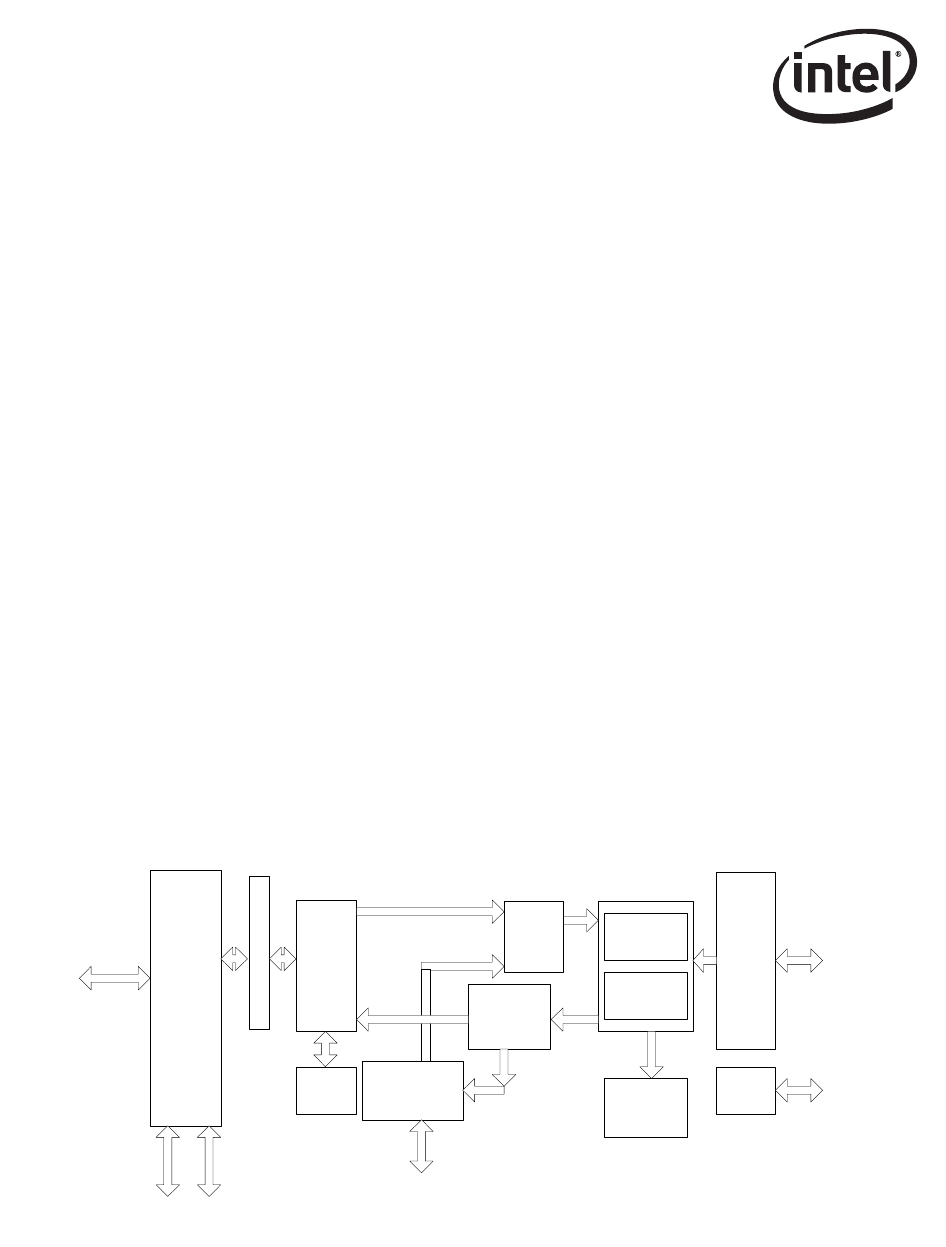
10 Software Developer’s Manual
Architectural Overview
2.3 Microarchitecture
Compared to its predecessors, the PCI/PCI-X Family of Gigabit Ethernet Controller’s MAC adds
improved receive-packet filtering to support SMBus-based manageability, as well as the ability to
transmit SMBus-based manageability packets. In addition, an ASF-compliant TCO controller is
integrated into the controller’s MAC for reduced-cost basic ASF manageability.
Note: The 82544GC/EI and 82541ER do not support SMBus-based manageability.
For the 82546GB/EB, this new functionality is packaged in an integrated dual-port combination.
The architecture includes two instances of both the MAC and PHY along with a single PCI/PCI-X
interface. As a result, each of the logical LAN devices appear as a distinct PCI/PCI-X bus device.
The following sections describe the hardware building blocks. Figure 2-4 shows the internal
microarchitecture.
2.3.1 PCI/PCI-X Core Interface
The PCI/PCI-X core provides a complete glueless interface to a 33/66 MHz, 32/64-bit PCI bus or a
33/66/133 MHz, 32/64 bit PCI-X bus. It is compliant with the PCI Bus Specification Rev 2.2 or 2.3
and the PCI-X Specification Rev. 1.0a. The Ethernet controllers provide 32 or 64 bits of addressing
and data, and the complete control interface to operate on a 32-bit or 64-bit PCI or PCI-X bus. In
systems with a dedicated bus for the Ethernet controller, this provides sufficient bandwidth to
support sustained 1000 Mb/s full-duplex transfer rates. Systems with a shared bus (especially the
32-bit wide interface) might not be able to maintain 1000 Mb/s, but can sustain multiple hundreds
of Mbps.
Figure 2-4. Internal Architecture Block Diagram
PCI/
PCI-X
Core
PCI Interface
EEPROM Flash
DMA
Engine
Packet
Buffer
TX MAC
(10/100/
1000 Mb)
RX MAC
(10/100/
1000 Mb)
Packet/
Manageability
Filter
TX
Switch
ASF
Manageability
GMII/
MII
Link I/F
MDIO
MDIO
RMON
Statistics
SM Bus
Host Arbiter



